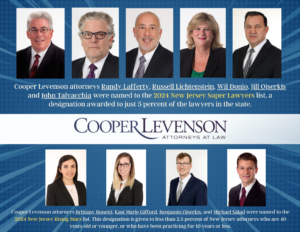Grow NJ Program
Grow NJ is a job creation and retention incentive program that provides tax credits. The tax credits are paid on a per job (new and/or retained) basis and are paid for up to 10 years per job, but the jobs must be maintained for 150% of the period the credits were paid. The project must be located in a Qualified Incentive Area, which includes: (1) an urban transit hub municipality; (2) a distressed municipality; (3) a Garden State Growth Zone (“GSGZ”); (4) a project in a priority area; (5) an Aviation District; (6) Planning Areas 1, 2 or 3 pursuant to the State Planning Act; (7) certain portions of Meadowlands, Pinelands and Highlands; (8) certain portions of Planning Areas 4A, 4B and 5; and (9) the “sports complex” under the jurisdiction of the New Jersey Sports and Exposition Authority.
| Project Type | Base Amount Per New or Retained FT Job, Per Year | Gross Amount Cap Per New or Retained FT Job, Per Year | Annual Maximum Cap to be Applied by the Business Annually |
| Urban Transit Hub Municipality (include only Camden, East Orange, Elizabeth, Hobken, Jersey City, Newark, New Brunswick, Paterson and Trenton) |
$5,000 | $12,000 | $10,000,000 |
| Distressed Municipality | $4,000 | $11,000 | $8,000,000 |
| Priority Area | $3,000 | $10,500 | $4,000,000 * Not more than 90% of business withholdings |
| Other Eligible Area (Includes portion of the qualified incentive area that are not located within a distressed muncipality, or priority area) | $5,000 | $6,000 | $2,500,000 * Not more than 90% of business withholdings |
| Disaster Recovery Project | $2,000 | $2,000 | Not aplicable. |
Several municipalities, including Atlantic City, Camden, Trenton, Passaic, and Paterson, are designated as GSGZs allowing for enhanced tax credit incentives for both existing (retained) full-time jobs and new full-time positions. A GSGZ project is eligible for $5,000 in base credits for each new or retained full-time job, per year with a gross annual cap (per new or retained full time job per year) of $15,000 and an annual maximum cap (to be applied by the business annually) of $30,000,000.
Projects are also eligible for one or more of the following bonus credits:
| Deep poverty pocket | $1,500 per job, per year |
| Located in a municipality with a 2007 MRI Index greater than 465 | $1,000 per job, per year |
| Transit oriented development | $2,000 per job, per year |
| Located within a half-mile of any new light rail station | $1,000 per job, per year |
| At least 251 new and retained full-time jobs are located in a GSGZ | $500 per job, per year (minimum) |
| The business is in a targeted industry: transportation, manufacturing, defense, energy, logistics, life sciences, technology, health, and finance business | $500 per job, per year |
| Any of jobs exceed annual average salary for GSGZ
(Atlantic City – $42,560; Camden – $28,784) |
$1,500 per job, per year |
| Exceeds LEED “Silver” rating or completes substantial environmental remediation | $250 per job, per year |
| Projects generating onsite solar energy of at least 1/2 of the project’s overall energy needs | $250 per job, per year |
To qualify for the Grow NJ program, the applicant must:
- Show the proposed project is located in a Qualified Incentive Area.
- Demonstrate the award of the tax credit is a “material factor” in the company’s decision to create or retain the minimum number of full-time jobs in the State of New Jersey.
- GSGZ Material Factor Test: The award of the tax credit is a “material factor” in the company’s decision to make a capital investment and locate in a GSGZ.
- Show that the Material Factor Test applies (for newly created jobs).
- Show the Material Factor Test applies and generally show that the jobs are at risk of leaving New Jersey (for retained jobs).
- Provide information regarding out-of-State alternatives considered by the business.
- Create or retain the minimum number of jobs shown on the table below.
- Meet the minimum capital investment requirement shown on the table below.
- Pass the Net Benefit Test demonstrating the capital investment and the resultant creation or retention of eligible jobs will yield a net positive benefit of at least 110% (100% in Camden) of the requested tax credit amount.
Generally, final point-of-sale retail businesses are not eligible except if the retail facility is at least 150,000 square feet, of which at least 50% is occupied by either a full service supermarket or grocery store, and the facility is located in a GSGZ or the Atlantic City Tourism District.
Only W-2 jobs (not 1099) jobs are eligible. Grow NJ program does not apply to 1099 employees.
In most cases, prevailing wage is required for all construction or renovation work and also subject to affirmative action requirements. Green Building standards also apply.
The project must meet or exceed the minimum employment requirements for full-time jobs. Full-time is defined as 35 or more hours weekly. These minimum standards include:
| GSGZ* | ||||
| Industry | New Jobs | Retained Jobs | New Jobs | Retained Jobs |
| Tech start-ups and manufacturing businesses | 10 | 25 | 8 | 19 |
| Other targeted Industries | 25 | 35 | 19 | 27 |
| All other businesses/industries | 35 | 50 | 27 | 38 |
* Minimum employment numbers are reduced by 1/4 for GSGZ projects and in eight South Jersey counties: Atlantic, Burlington, Camden, Cape May, Cumberland, Gloucester, Ocean and Salem.
The applicant is responsible for a minimum capital investment:
| GSGZ* | ||
| Project Type | Cost per Square Foot | Cost per Square Foot* |
| Industrial, Warehousing, Logistics and R&D – Rehabilitation Projects | $20 | $13.43 |
| Industrial, Warehousing, Logistics and R&D – New Construction Projects | $60 | $40 |
| Other – Rehabilitation Projects | $40 | $26.67 |
| Other – New Construction Projects | $120 | $80 |
* Minimum capital investment amounts are lowered by 1/3 for GSGZ projects and in eight South Jersey counties: Atlantic, Burlington, Camden, Cape May, Cumberland, Gloucester, Ocean and Salem.
Economic Redevelopment and Growth (ERG) Grant
ERG is a State incentive program providing annual grants equal to certain incremental taxes generated from a commercial project which allows developers to address financing gaps for proposed commercial projects.
Commercial projects are eligible for an incentive grant reimbursement of up to 20% of total project costs, with additional grant funding possible based on project type and/or location, such as a GSGZ.
The redevelopment project must be in a qualifying economic redevelopment and growth incentive area which includes:
- Planning Areas 1 and 2 pursuant to the State Planning Act and centers designated under the State Development and Redevelopment Plan;
- Certain portions of Meadowlands, Pinelands and Highlands;
- Certain land within the Hackensack Meadowlands District;
- GSGZs;
- Federally-owned land approved for closure by the federal Base Realignment Closing Commission; and
- Certain portions of Planning Areas 4A, 4B and 5 if the site is located within: (1) a designated center under the State Development and Redevelopment Plan; (2) a designated growth center; (3) an area in need of redevelopment or in need of rehabilitation; (4) a previously-existing structure and the project otherwise complies with all applicable permits and approvals; (5) certain portions of the Highlands; or (6) a tourism district.
The project can be eligible for up to 20% of total project costs and may qualify for the following additional incentives:
- A project located in a GSGZ is eligible for 20% additional funding (i.e., a total maximum of up to 40%)
- A project is eligible for up to an additional 10% (i.e., a total maximum of up to 30%) if the project is one or more of project types or located in one or more of the following locations:
- A distressed municipality lacking adequate access to nutritious food, (if the project proposes a grocery store) or health care services (if the project proposes a health care and health services center)
- Transit project
- Located in a highlands development credit receiving area or redevelopment area
- Disaster recovery project
- Aviation project
- Tourism destination project
- Substantial rehabilitation or renovation of an existing structure(s)
Eligibility Requirements
- Construction cannot commence at the site of a proposed redevelopment project prior to submitting an application. The project can be completed in phases.
- A project financing gap must exist. In practice this means the project must have a below market IRR.
- All projects must meet Green Building Requirements.
- Construction contracts must use prevailing wage labor rates and meet affirmative action requirements.
- There are no minimum total project cost requirements for commercial projects.
- The developer must apply for a redevelopment incentive grant with the New Jersey Economic Development Authority (NJEDA).
- Pursuant to a net benefit analysis, the overall public assistance provided to the project will result in net benefits to the state. The project must result in a net positive economic benefit to the State (for a State ERG) or the municipality (for a Local ERG) of at least 110% or greater than the grant award.
- The project is not subject to minimum total project cost requirements.
- The developer must have an equity participation of at least 20% of the total project cost.
Grant Award
- Paid to the developer as annual redevelopment incentive grants.
- The annual percentage amount of reimbursement cannot exceed 75% of the annual incremental state revenues (or 85% of the project’s annual incremental revenues in a GSGZ).
- Paid to developer following completion.
- Reimbursement is available for up to 20 years.
Eligible Costs
- Incentive grants are based upon certain incremental state taxes generated from the project, including, but not limited to: the Corporation Business Tax Act; tax derived from net profits from business; distributive share of partnership income, or a pro rata share of S corporation income under the New Jersey Gross Income Act; tax derived from a business at the site of a redevelopment project that is required to collect the tax pursuant to the Sales and Use Tax Act; tax imposed from the purchase of materials used for remediation, construction of new structures, or the construction of new residences at the site of a redevelopment project; and the hotel and motel occupancy fee.
- Developer can also obtain Local ERG incentive grants from certain municipal taxes generated by the project.
Tax Abatements
Municipalities may grant tax exemptions/abatements to promote the construction and rehabilitation of residential, commercial and industrial structures. Abatements are only available if the municipality has determined the property to be an “area in need of rehabilitation” for five-year tax abatements or an “area in need of redevelopment” for long-term tax abatements
5-Year Tax Abatements
Developers may qualify for this abatement on rehabilitation or new construction improvements. In lieu of taxes on full assessed value, the developer can chose to pay:
- 2% of the project’s annual costs for 5 years;
- 15% of the project’s gross revenues; or
- 20% phase-in over 5 years.
The developer must provide the following information:
- A general description of a project for which exemption and abatement is sought;
- A legal description of all real estate necessary for the project;
- Plans, drawings and other documents as may be required by the governing body to demonstrate the structure and design of the project;
- A description of the number, classes and type of employees to be employed at the project site within two years of completion of the project;
- A statement of the reasons for seeking tax exemption and abatement on the project, and a description of the benefits to be realized by the applicant if a tax agreement is granted;
- Estimates of the cost of completing such project;
- A statement showing (1) the real property taxes currently being assessed at the project site; (2) estimated tax payments that would be made annually by the applicant on the project during the period of the agreement, and (3) estimated tax payments that would be made by the applicant on the project during the first full year following the termination of the tax agreement; and
- A description of any lease agreements between the applicant and proposed tenants of the project, and a history and description of the tenants’ businesses.
Long-Term Tax Abatements
Developers may also qualify for long-term tax abatements, up to 30 years under some circumstances, and instead make payments in lieu of taxes (PILOT).
Requirements:
- Project site must be designated as an “Area in Need of Redevelopment”
- In order to determine a project site to be an “Area in Need of Redevelopment,” the municipality has determined that:
- all or a portion of the project will result in the redevelopment of the municipality; and
- the financial agreement with the developer is a necessary or important inducement to the undertaking of the project or the redevelopment of the municipality that makes this financing feasible.
- An entity will be named as the “redeveloper” for the Project by the municipality.
- Adoption of an ordinance to approve a PILOT.
- The developer and the municipality negotiate a financial agreement.
Redevelopment Area Bonds (RABs)
For redevelopment projects experiencing difficulties with traditional funding sources (e.g., equity and conventional debt), RABs allow a municipality to securitize the stream of “payments in lieu of taxes” (PILOT) through a redevelopment agreement with the developer. All or a portion of the PILOT can be pledged to the repayment of the RABs. RABs can be used to help with infrastructure improvements or for the project itself.








